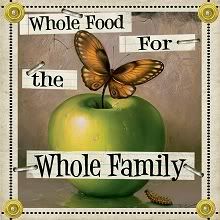It is wise to have several alternative cooking options in order to be prepared for various circumstances. Some options are so simple that you probably don't even realize you have them. Here are a few alternative cooking ideas:
fireplace
charcoal grill (a folding grill is nice for travel)
fondue pot/chafing dish
votive candles (yes, you can cook with them)
sterno cooking stove
butane/propane/Coleman fuel/gasoline camp stove
kerosene heater
dutch oven (you can cook over coals or in the ground)
campfire
solar oven
hobo stove
aluminum foil (to make a solar oven or cook in coals, etc.)
Snap-On-Stove® (Uses a product called ALCO-BRITE® gelled ethanol fuel)
Folding Personal Stove Trioxan Lightweight Pocket Sized Stove
heat canned foods in the can, after removing the label
***************************************************************************************************
If the Electricity Goes Off:
FIRST, use perishable food and foods from the refrigerator.
THEN, use the foods from the freezer. To minimize the number of times you open the freezer door, post a list of freezer contents on it. In a well-filled, well-insulated freezer, foods will usually still have ice crystals in their centers (meaning foods are safe to eat) for at least three days.
FINALLY, begin to use non-perishable foods and staples.
***************************************************************************************************
Hobo Stove: This is reportedly a very efficient and inexpensive option. Puncture three holes in the bottom edge of a one-gallon paint can, then turn the can over and puncture three identical holes in the top edge. Make one of the holes in the bottom large enough so you can stick a match through and light the fuel. Air will be drawn in through the bottom holes and exhausted through the top. If you want to keep your pans from getting full of soot, cook with the can lid on. You can burn sticks, Canned Heat, or trash. Operate outside only.
****************************************************************************************************
Preparing Food During a Power Failure:
During a power failure, cooking and eating habits must change to fit the situation. You may have no heat, no refrigeration and limited water. In addition, health risks from contaminated or spoiled food may increase.
Conserve Fuel:
Consider the amount of cooking time needed for particular foods. If you have limited heat for cooking, choose foods which cook quickly. Prepare one-dish meals or serve no-cook foods. Commercially-canned foods can be eaten straight from the can. Do not use home-canned vegetables unless you have the means to boil them for 20 minutes before eating.
- From "Preparing Food During a Power Failure" University of Illinois Extension Disaster Resources http://spectre.ag.uiuc.edu/~disaster/facts/powerout.html




No comments:
Post a Comment